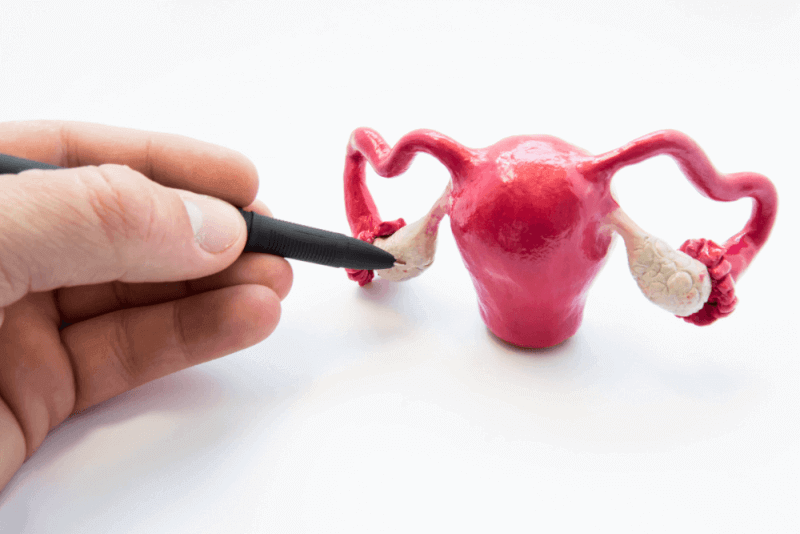30 Second Summary
- Hysteroscopy is a procedure that allows the inside of the uterus to be visualized with a camera.
- Diagnostic hysteroscopy is used to diagnose menstrual irregularities, intrauterine polyps, fibroids and other intrauterine abnormalities.
- Therapeutic hysteroscopy is used to remove intrauterine polyps, fibroids and other intrauterine abnormalities.
- It is usually performed as an outpatient treatment and patients are discharged on the same day.
What is hysteroscopy?
Hysteroscopy has an important place when it comes to protecting women's health. It is one of the prominent methods especially for women who want to have children or get rid of gynecological diseases. However, it is important that the application is performed by an expert in the field and in the right center.
Hysteroscopy is a compound word made up of the words hitero and scopi and means uterine imaging. It is popularly called a vaginal camera. A special optical device is used to enter through the cervix and visualize the tubes and the inside of the uterus. Hysteroscopy method, which allows visualization of the specified areas with the help of a camera, can be applied for diagnosis and treatment.
Summary of Surgery
Duration of Surgery 15 minutes-1 hour
Anesthesia Method: General, Spinal, Local anesthesia
Hospitalization Duration: 1 day
Return to Work Time: 1-2 Days
Types of hysteroscopy
Hysteroscopy is one of the minimally invasive procedures used for both diagnosis and treatment. For this reason, it is divided into Office Hysteroscopy and Operative Hysteroscopy according to the place of application and anesthesia.
Office (Diagnostic) Hysteroscopy
Office Hysteroscopy applications are performed for diagnostic purposes. It is applied in cases such as menstrual irregularities or diagnosing the cause of persistent miscarriages. Office Hysteroscopy, which is performed in clinical settings and usually under local anesthesia, is a painless procedure.
Operative Hysteroscopy
Operative Hysteroscopy is performed for therapeutic purposes. Operative Hysteroscopy, which is applied for treatments such as the removal of diagnosed myopia or polyps from the uterus, is performed under operating room conditions and under general anesthesia. Some patients may need to stay overnight in hospital after this procedure.
In which diseases is hysteroscopy used?
When hysteroscopy is used for diagnostic purposes, the following diseases are examined:
- Any complaint of bleeding
- Menstrual irregularities
- Agri
- Intrauterine myoma
- Intrauterine polyp
- Congenital anomalies
- Removal of spirals with missing ends
- Adhesions in the uterus
- Curtain in the uterus
- Diagnosis of uterine wall pathogens
- Abnormal bleeding before or after menopause
- In cases where the products of pregnancy cannot be expelled or remain in the uterus
- Investigation of recurrent miscarriages
- Investigation of recurrent in vitro fertilization failures
- In the confirmation of HSG and ultrasonography findings
- Infertility problems
The procedures in which hysteroscopy is used for treatment are as follows:
- To remove the uterus of patients who have excessive menstrual bleeding but do not respond to medication
- For the correction of uterine abnormalities such as T-shaped uterine wall or intrauterine curtain
- Opening of intrauterine adhesions
- Removal of fibroids
- Removal of polyps
- Removal of the spiral from the uterus
- Elimination of congenital anomalies
- Removal of the part after a miscarriage or abortion
- Treatment of lesions in the cervical canal
- Cauterization of the intrauterine wall
Conditions in which hysteroscopy is not applicable
Hysteroscopy is not used for all gynecological diseases. In the following cases, it is not medically appropriate to use this method for diagnosis or treatment:
- Pregnancy
- Active Herpes infection
- Severe infections
- Severe uterine bleeding
- Cervical cancer
How is hysteroscopy performed?
Special instruments are used in the hysteroscopy procedure. These instruments are inserted into the uterus through the vaginal canal. In some operative procedures, patients may be given medication to dilate the cervix before the procedure. Patients can also be given special fluids to observe the inside of the uterus. These special fluids allow the internal structure of the uterus to be seen more clearly on the monitor. If this procedure is to be used only for diagnosis, it is done using a camera and lens. However, when it is used for therapeutic purposes, it also has cutting and burning instruments at the end of the tool.
The outer diameter of the hysteroscopy instrument varies between 3.1 and 10 mm. The hysteroscopy instrument itself contains a light source and channels for the passage of fluid. In addition, mobile tips are also used to intervene in the uterus. Patients are discharged on the same day after hysteroscopy.
Things to consider before hysteroscopy
Hysteroscopy is a procedure performed at the end of menstruation. In patients of reproductive age and with a regular menstrual cycle, the operation is planned for the end of the menstrual period, while in patients who are in the reproductive period but have menstrual irregularities, doctors make the necessary planning. The main reasons for performing the operation within 3 to 4 days after the end of the menstrual period in patients with regular menstruation is that the uterine wall is in the thinnest state and there is no risk of pregnancy.
Things to consider after hysteroscopy
After the hysteroscopy procedure, you must first follow your doctor's recommendations. So you can regain your health as soon as possible. In addition, there are some general points that patients should follow after hysteroscopy.
- After hysteroscopy, you should not have sexual intercourse for the period recommended by your doctor. You can then resume your routine sexual life. Depending on the patient's condition, hormonal treatment can be initiated. In this case, treatment must be meticulously administered.
- For a few days after the Operative Hysteroscopy, spotting and pain similar to menstrual cramps may be felt. There is no harm for patients to use painkillers at this stage.
Benefits of hysteroscopy
The biggest advantage of hysteroscopy is that it can be used for both diagnosis and treatment of gynecological diseases. In addition, the benefits include the fact that hospitalization is not required after the procedure and patients can return to their normal lives immediately.
Since it allows direct observation of the intrauterine cavity, its diagnostic aspect is much stronger than other diagnostic methods. In addition, it is an effective treatment method in cases such as polyps, fibroids and submucosa.
Harm of hysteroscopy
As with any surgical procedure, hysteroscopy can also have some complications. In particular, serious complications such as perforation of the uterus during the procedure or accumulation of the fluid given to visualize the uterus in the lungs and bleeding can occur. However, this procedure is one of the minimally invasive operations that does not disturb the comfort of the patients and does not significantly affect their general health status. In fact, hysteroscopy is one of the most important gynecology and gynecology diagnostic methods that enable patients to regain their health quickly.
Pregnancy after hysteroscopy
Hysteroscopy, which is an important diagnostic method in the diagnosis of infertility, is one of the most important methods that should be applied especially in the case of multiple negative results of IVF treatment. This is because studies have shown that 50% of the reasons why pregnancy does not occur are based on reasons such as intrauterine adhesions, intrauterine curtains or polyps. Hysteroscopy has an important place in the treatment of these anomalies.








